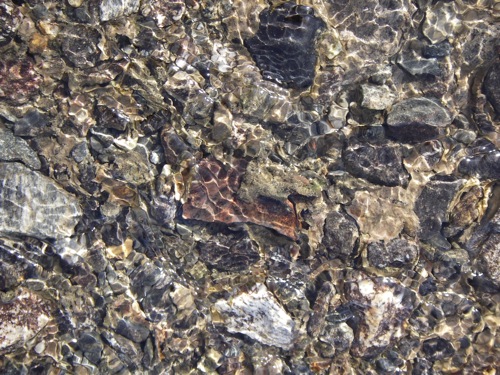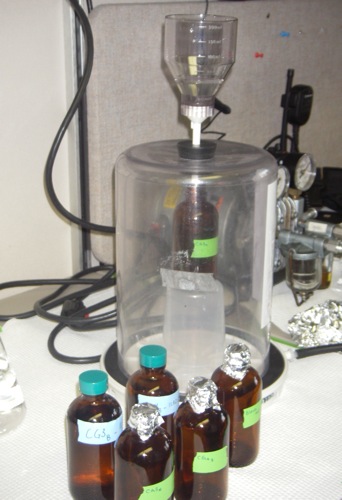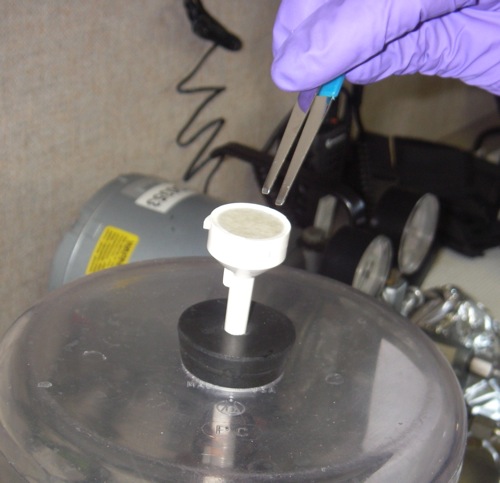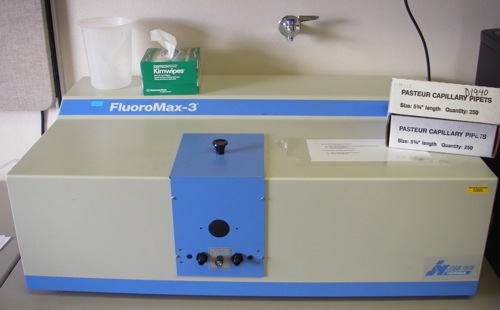Mike, Collin, Yo, Chip, and I are working out of the McMurdo Station Crary Lab right now, while Heidi, Birgit and Christine are collecting water samples, ice cores and conducting tests from the Lake Fryxell Camp.

We already have over 240L of water collected in 20L containers from the Cotton GlacierA mass of ice that persists for many years and notably deforms and flows under the influence of gravity. Streams and the Canada Stream. (Challenge questions: How many gallons of water are in 240L? How many 20L containers do you need to hold 240L of stream water?) There are a number of analyses we run on the water to determine the types of dissolved organic matter (DOM) and species of bacteria that reside within the stream system.
Today I would like to introduce you to one of the tests we perform on the sampled water and the purpose behind the analysis.
Chlorophyll-a extraction and fluorescence:
Chlorophyll-a is a pigment in the molecules of plants, including algae, which absorbs light as energy. Three things can occur with this absorbed light energy within the molecules; it can drive the photosynthesis process, disperse as heat, or re-emit from the excited molecules as light in a process called fluorescence. These processes are in competition with each other and the one with the highest yield weakens the other two consequently. Just like if you buy the new iPOD nano- the three big capabilities on the nano are in competition with each other: playing music, shooting video, and playing back the video. The music playing capabilities are the strongest, it has the highest "yield", and the other two nano processes are weakened to give the music quality more strength- recording video and video playback are definitely not HD quality!

The DOM team is extracting molecules containing chlorophyll-a from the water by filtering stream water though a glass fiber filter that filters out micron-size, or larger, particles from the water. A micron is very microscopic- one-millionth of a meter, or approximately 0.00003937 inches. We have to filter the water in a dark room because the chlorophyll-a is light sensitive and the molecules degrade in the light. We use the microscopic matter that remains on the filter in the next step of the chlorophyll-*a *extraction.


The next step is to measure the chlorophyll fluorescence in a machine called a fluorometer. Remember, chlorophyll fluorescence is the energy that is re-emitted from the molecules as light. Using a fluorometer to measure the amount of light the molecules are emitting also gives scientists information about how much photosynthesis is occurring and the amount of heat dispersing from the molecules. So, why does chlorophyll-a extraction matter to the DOM researchers? If a water sample is high in chlorophyll-*a *that indicates that there may be high levels of photosynthesis occurring, in this case from algae. This means that the water from the Antarctic streams contains microscopic, living algae! Who ever claimed that Antarctica was a continent devoid of life was very, very wrong. It just so happens that most of the living organisms in Antarctica are too small for the eye to see without the use of powerful tools.


Comments